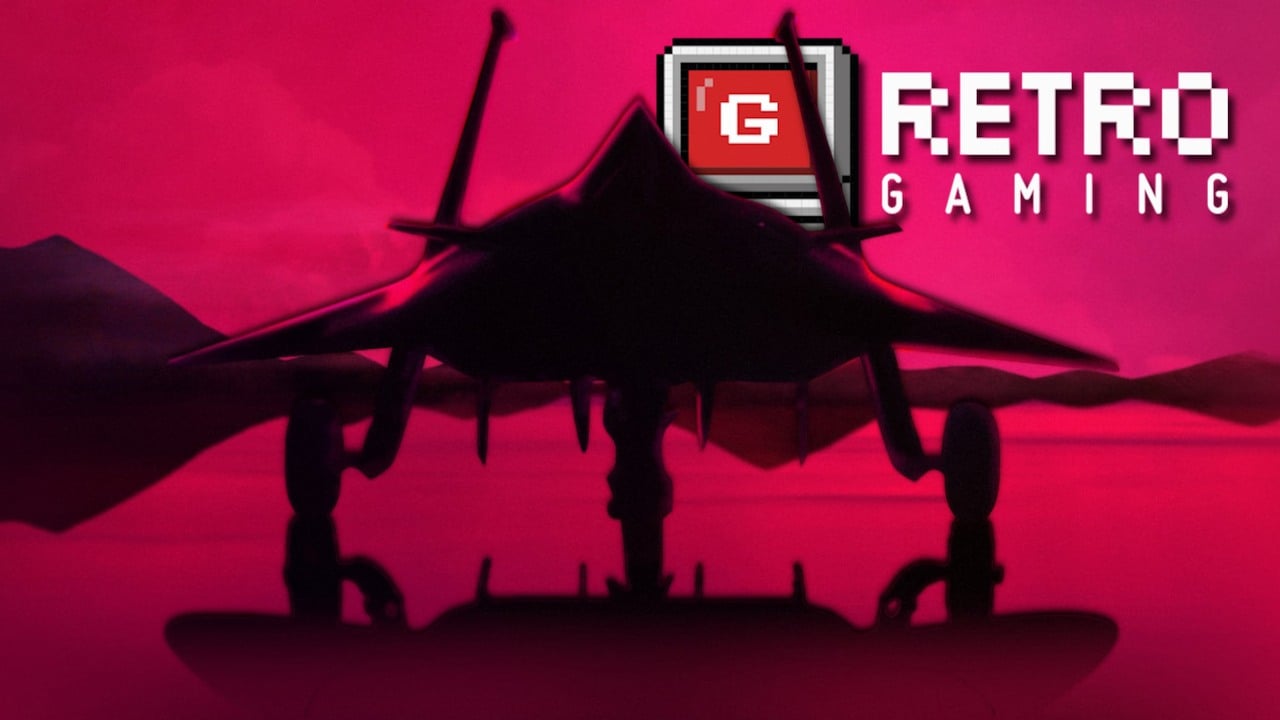
During the early 90s, we found ourselves playing many games from the previous decade. One such game was the “F-19 Stealth Fighter” by MicroProse studio. This flight simulator stood out among others, including top sellers like the “F-15 Strike Eagle” and “Gunship”. It surpassed them in terms of quality and playability.
Since Sid Meier and Andy Hollis, famously known as the “dream team,” were leading the project, and MicroProse, with its founder being an ex-US Air Force pilot, had already established a significant presence in the military game market, it was only natural. F-19 Stealth Fighter, however, didn’t quite make it into the hall of fame of all-time great games. Nevertheless, given its unique and engaging “gaming backstory,” it deserves a spot in the Retro Gaming series for its captivating tale.
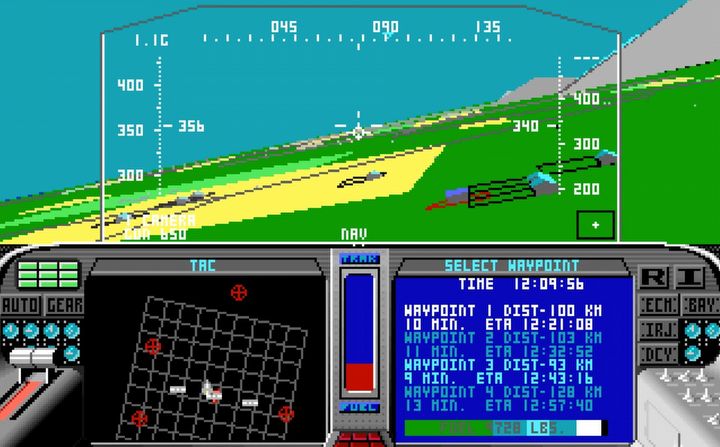
Realism and Cold War
To set the record straight, let’s briefly recap my adventure with the F-19 Stealth Fighter. I found myself stepping into the shoes of a modern multirole aviator, tasked with executing missions across various geographical regions like Libya, the Persian Gulf, northern Norway, and Central Europe. The game offered an immersive experience as I flew my high-tech aircraft.
During the Cold War era, the game was launched, and remarkably, its gameplay subtly reflected this tense political climate. The tasks primarily revolved around conducting aerial surveillance of adversaries’ facilities, focusing more on gathering intel through imagery rather than causing damage.
Back then, they offered the classic experience of strategic warfare as well. Remarkably realistic actions from AI-controlled adversaries were incorporated, making them seem authentic for that era. Furthermore, the simulation of radar usage in battle was done with striking accuracy.
As a result, the F-19 simulation received exceptional praise and accolades, even beyond the screen, due to its wealth of intricate contents. The game package came complete with an extensive manual detailing authentic equipment and machines, maps of campaign locations, and keyboard overlays to help players grasp numerous key commands more easily.
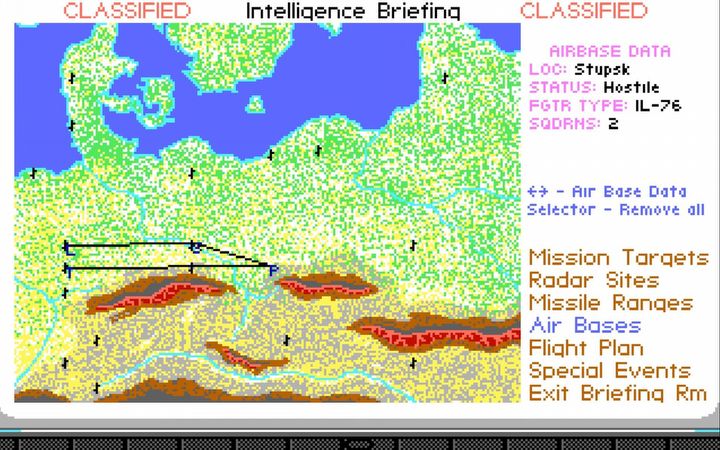
A remake that got its own remake
The F-19 Stealth Fighter wasn’t an entirely new concept, but rather a reimagining of a 1987 game called “Project Stealth Fighter,” also developed by MicroProse. One key distinction is that the original game was designed exclusively for 8-bit computers such as the Commodore 64 and ZX Spectrum, while the modern version was intended for 16-bit machines. Initially, it appeared on PCs and DOS systems, followed by releases on Amiga, Atari ST, and the niche Japanese NEC computer platform, PC-98.
The “Project Stealth Fighter” was widely acclaimed as a “jewel” among simulation games. It aimed to push the boundaries of what 8-bit computers could achieve graphically, and impressed with its realism. In fact, it was considered the top simulator from this studio, surpassing both “Gunship” and “F-15”.
In essence, the reimagined game was virtually recreated anew, with only a few elements such as mission scenarios, details about military equipment, and certain flight model algorithms being carried over from the original C64 version, as stated by designer Arnold Hendrick. The majority of the work, including enhanced graphics, was freshly produced. The game presented well, even though it employed a 16-color EGA card palette for its images. The Amiga and Atari versions appeared slightly superior in quality.
The third version of the game, Stealth Fighter 2.0, released in 1991, addressed all its flaws, particularly the graphics quality. However, the second remake made an even more significant change: it transformed the entire aircraft. Unlike earlier versions where we flew with a model airplane, this time around, it’s a full-scale aircraft.
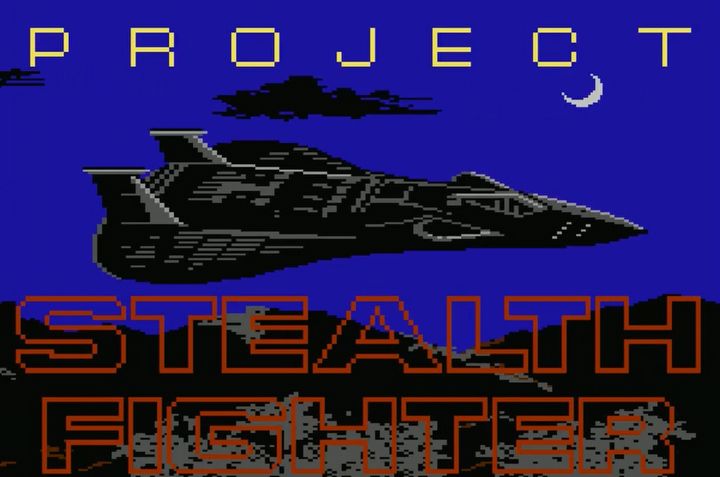
How a toy shaped public opinion…
During the 1980s, as the Cold War maintained the world’s split into Eastern (Warsaw Pact) and Western (NATO) blocs, an intense competition in weapons development raged between the two dominant powers: the USA and the USSR. Each side was determined to preserve their technological edge, which extended to a cutting-edge jet aircraft within the U.S. Air Force. They both made great efforts to conceal their advancements.
It was common knowledge among media and public opinion that something significant was taking place – rumors swirled about an advanced, stealthy aircraft used by the USA, undetectable by radar systems. However, no concrete details were disclosed, leaving room for speculation regarding its abilities and potential name, F-19, which seemed plausible given the naming pattern of previous models.
In 1986, Testors, an American firm known for producing model kits of cars, airplanes, paints, and modeling tools, introduced a model kit depicting their concept of the F-19 aircraft. The unique round shape reminiscent of a bell or the sole of a shoe was merely a creative idea within Testors. With no other similar designs available at the time, this vision seamlessly filled an existing gap in aerial design. The Testors F-19 model kit proved to be a massive success and their most popular product, prompting competitors like Hasbro and Matchbox to produce toys based on the innovative aircraft design created by Testors.
However, there’s more to it – the fictional F-19 model kit became quite popular in various media outlets, particularly after the real F-19 aircraft crashed in a California national park. Many news channels resorted to using a Testors F-19 image to depict the accident scene. Even the renowned author, Tom Clancy, was deceived by this concept – he described in his book, “Red Storm Rising,” the covert missions of the “invisible” F-19s, which were said to resemble a “cathedral bell,” with no sharp edges, and the pilots supposedly nicknamed the aircraft “frisbee” due to their unique shape.
In both of their Stealth Fighter games, MicroProse adopted the Testors model kit as the central character. However, when the initial remake was released in 1988, things became crystal clear. At the Pentagon, a fuzzy image of a black aircraft, known as the F-117, was officially unveiled for the first time. In terms of appearance, this aircraft bore little resemblance to the F-19, except for its color.
Art of three invisible airplanes
For five years, the government and the air force maintained a closely guarded secret: the F-117 stealth fighter was in operation for regular night flights, but it wasn’t until 1991 that the public learned about this remarkable project. Three years later, during “Desert Storm,” the aircraft became an iconic symbol. By then, even those who didn’t follow aviation were familiar with its distinctive shape.
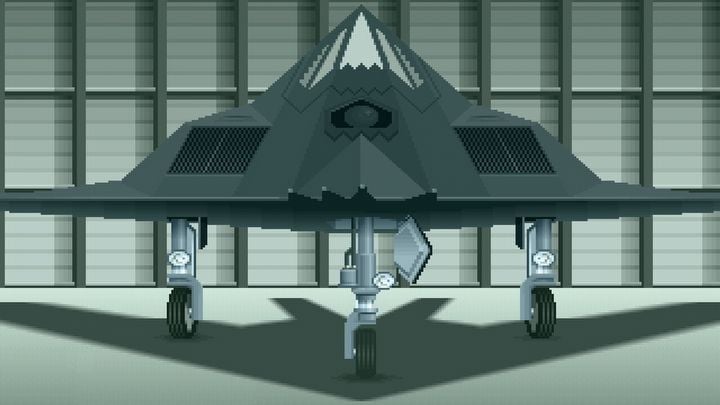
In 1991, MicroProse launched a game titled F-117A Nighthawk Stealth Fighter 2.0, which can be seen as both a remake and a sequel. On the box and screen, the angular, sharp-edged F-117A aircraft was presented – the actual, authentic one. The game offered two levels of simulation realism: “MicroProse” and “Lockheed,” each providing different degrees of realism.
In the initial stage, there was more open gameplay and an option to attack both air and ground targets, similar to previous versions. The subsequent level, named after its creator, only permitted bombing missions, reflecting the true nature of the original. Moreover, the graphics significantly improved, matching the capabilities of Amiga and showcasing 256 vibrant colors with the latest VGA graphics card. The game F-117A 2.0, for the third time in a row, garnered mostly positive reviews, although its ratings never dipped below 8/10.
How to play F-19 Stealth Fighter and F-117A Stealth Fighter 2.0 today?
The original version of “Project Stealth Fighter” can only be obtained through browser emulators or by those fortunate enough to own physical copies and 8-bit computers. However, updated digital versions are now available for purchase officially on Steam and the GOG.com store. In this initial release, it costs $6.99, but you’ll find a slightly lower price of $5.99 per title at GOG.
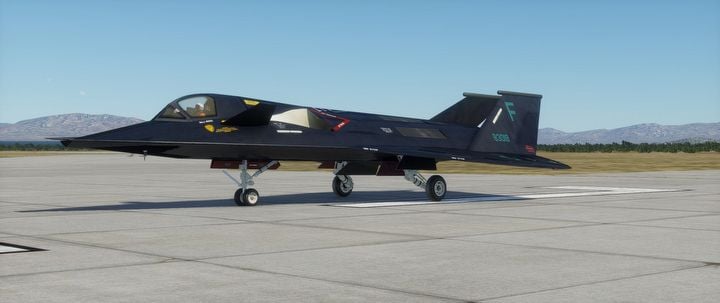
A fascinating tidbit could be that VSkyLabs modernized the appearance of the hypothetical F-19 aircraft, as envisioned by Testors, in the X-Plane 12 simulator through contemporary graphic design. This enhancement can be obtained as a paid add-on and provides a more captivating cockpit experience, albeit, regrettably, a narrative campaign with combat missions remains an unrealized aspiration.
Read More
- Who Is Harley Wallace? The Heartbreaking Truth Behind Bring Her Back’s Dedication
- 50 Ankle Break & Score Sound ID Codes for Basketball Zero
- Lost Sword Tier List & Reroll Guide [RELEASE]
- 50 Goal Sound ID Codes for Blue Lock Rivals
- Basketball Zero Boombox & Music ID Codes – Roblox
- 100 Most-Watched TV Series of 2024-25 Across Streaming, Broadcast and Cable: ‘Squid Game’ Leads This Season’s Rankers
- KPop Demon Hunters: Real Ages Revealed?!
- Umamusume: Pretty Derby Support Card Tier List [Release]
- The best Easter eggs in Jurassic World Rebirth, including callbacks to Jurassic Park
- Come and See
2025-07-13 08:32